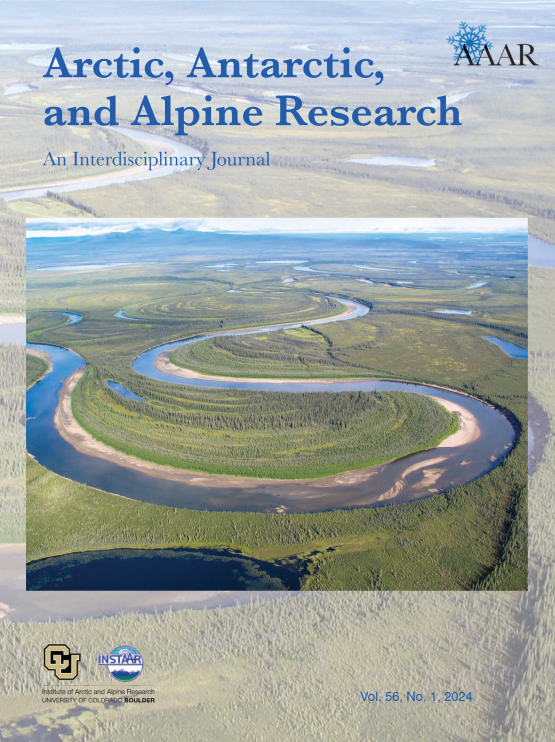Submit a Manuscript to the Journal
Arctic, Antarctic, and Alpine Research
For an Article Collection on
Beringian Environments
Manuscript deadline
30 September 2024

Article collection guest advisor(s)
Dr. Lesleigh Anderson,
U.S. Geological Survey - Denver Federal Center, Colorado, USA
[email protected]
Prof. Scott Elias,
University of London Royal Holloway, United Kingdom
[email protected]
Prof. Duane Froese,
University of Alberta, Canada
[email protected]
Prof. John Hoffecker,
Institute of Arctic and Alpine Research, CU Boulder, Colorado, USA
[email protected]
Beringian Environments
As the study of Beringia approaches its second century, significant questions, challenges, and enigmas continue to inspire research about this largely unglaciated region between the Yukon Territory and northeast Asia, including the now submerged areas of the continental shelf. New environmental proxies such as ancient DNA, are propelling greater understanding of Beringian environments and how changes in climate drove large-scale changes in vegetation and large mammal populations, ultimately influencing the peopling of the Western Hemisphere.
During the Pleistocene, repeated declines in global sea level in response to growing global ice volume created a wide plain adjoining the arctic coast of northeast Asia and an inter-continental land bridge that allowed interchange of biota between Asia and the Americas. Periods of reduced glaciation saw sea-level rise, which opened the Bering Strait and connected the Arctic and North Pacific oceans with profound impacts on Beringian climate and ecosystems. The final (late glacial) flooding of the land bridge brought abrupt warming and cooling events, and possibly warmer-than-present climate. A better understanding of these environmental changes is particularly relevant for the modern inhabitants of the Arctic; they are now on the front lines of global climate change.
Recent studies in new locations and advances in proxy methods have raised new hypotheses about Beringian environments, climate, and human occupants during the late Pleistocene and early Holocene. The aim of this inter-disciplinary collection is to provide a focused opportunity to bring the various strands of the latest research together. We are inviting scientists from the full range of paleoenvironmental disciplines and methods to contribute your latest research and to be a part of this special issue on Beringian Environments.
Arctic, Antarctic, and Alpine Research is a peer-reviewed open access interdisciplinary journal dedicated to cold regions physical and environmental research. AAAR accepts research articles, review articles, short communications, and data notes. Specifically-formatted science briefs may be submitted to the journal’s Arctic Answers Collection, and could be included in both Collections, if applicable.
Please contact Managing Editor Jen Hall-Bowman with any questions ([email protected]).
Benefits of publishing open access within Taylor & Francis
Global marketing and publicity, ensuring your research reaches the people you want it to.
Article Collections bring together the latest research on hot topics from influential researchers across the globe.
Rigorous peer review for every open access article.
Rapid online publication allowing you to share your work quickly.
Looking to Publish your Research?
Find out how to publish your research open access with Taylor & Francis Group.
Choose open accessSubmission Instructions
All manuscripts submitted to this Article Collection will undergo desk assessment and peer-review as part of our standard editorial process. Guest Advisors for this collection will not be involved in peer-reviewing manuscripts unless they are an existing member of the Editorial Board. Please review the journal Aims and Scope and author submission instructions prior to submitting a manuscript.